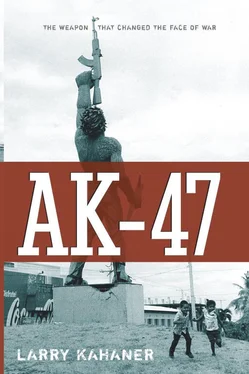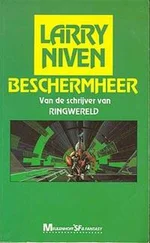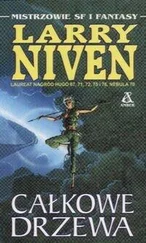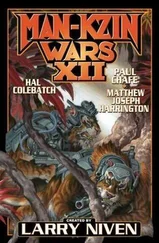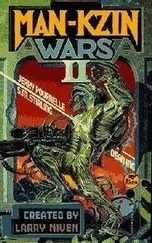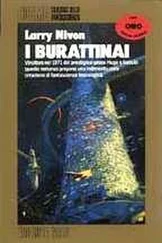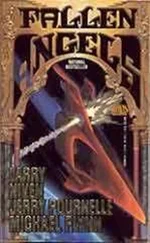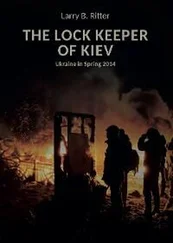Larry Kahaner - AK-47
Здесь есть возможность читать онлайн «Larry Kahaner - AK-47» весь текст электронной книги совершенно бесплатно (целиком полную версию без сокращений). В некоторых случаях можно слушать аудио, скачать через торрент в формате fb2 и присутствует краткое содержание. Город: Hoboken, Год выпуска: 2007, ISBN: 2007, Издательство: John Wiley & Sons, Inc., Жанр: История, military_history, на английском языке. Описание произведения, (предисловие) а так же отзывы посетителей доступны на портале библиотеки ЛибКат.
- Название:AK-47
- Автор:
- Издательство:John Wiley & Sons, Inc.
- Жанр:
- Год:2007
- Город:Hoboken
- ISBN:9780470315668
- Рейтинг книги:3 / 5. Голосов: 1
-
Избранное:Добавить в избранное
- Отзывы:
-
Ваша оценка:
- 60
- 1
- 2
- 3
- 4
- 5
AK-47: краткое содержание, описание и аннотация
Предлагаем к чтению аннотацию, описание, краткое содержание или предисловие (зависит от того, что написал сам автор книги «AK-47»). Если вы не нашли необходимую информацию о книге — напишите в комментариях, мы постараемся отыскать её.
AK-47 — читать онлайн бесплатно полную книгу (весь текст) целиком
Ниже представлен текст книги, разбитый по страницам. Система сохранения места последней прочитанной страницы, позволяет с удобством читать онлайн бесплатно книгу «AK-47», без необходимости каждый раз заново искать на чём Вы остановились. Поставьте закладку, и сможете в любой момент перейти на страницу, на которой закончили чтение.
Интервал:
Закладка:
Code-named Abakan (a town in south-central Russia), the contest began in the late 1970s with about a dozen design groups competing against each other. Izhmash, where Kalashnikov held the post of senior designer (although it was more of an emeritus position), threw two design groups into the fray. His son Viktor headed one design bureau and the other group was headed by Gennady Nikonov, a well-established arms maker who had worked at Izhmash since he graduated technical school at eighteen. Both Nikonov’s parents worked at Izhmash and early in his career he had distinguished himself by designing a trigger mechanism for an underwater rifle. He had also worked on sporting weapons and won accolades for the accurate and smart-looking Izbur (Buck Deer), a high-end carbine that was produced in limited quantities for discriminating shooters. During his tenure at Izhmash, Nikonov snared two prestigious awards, the Company’s Top Designer and the Top Designer of the Ministry, and he was awarded more than forty patents. His wife, Tatiana, worked as an engineer in the same design center.
Kalashnikov lobbied heavily for his son’s team to win the contest. Even after the winning rifle received its official name, AN-94—Automatic Nikonov 1994—and its adoption appeared certain, the elder Kalashnikov continued to push for his son’s design. He wanted to carry on the family tradition, but his efforts at calling in political favors were of no use. Viktor’s group came in second.
To add further insult to the dean of Russian weapons makers, Nikonov further separated himself from the AK by announcing publicly that his designs were influenced by the legendary designers Evgeny Dragunov and Azariy Nesterov, not Kalashnikov. The AN-94 looked and acted nothing like the AK.
One of the startling differences of the AN-94 was the muzzle attachment. Called a flash eliminator, this asymmetrically shaped muzzle device featured two vent holes on either side plus a vent hole in the upper right side of the first of two chambers. The upper vent hole was configured like a dog whistle, designed to produce a sound out of the range of human hearing caused by the fast-moving air pushing out of the barrel.
The AN-94 and a thirty-round magazine weighed nine and a half pounds, about two pounds more than an AK-74, and the furniture was produced from fiberglass-reinforced polyamide, similar to the newer AK models and most modern rifles. The rifle had improved sights and safety switch ergonomics, but the most dramatic difference was in how it worked.
The gas-operated system employed a design that the Russians called “blow-back shift pulse” that fired in two-shot bursts, instead of the usual three, with no recoil from the first to second shot. In addition, the first two shots fired at the astounding rate of 1,800 rounds per minute (about three times that of the AK’s 600 round-per-minute rate) when in the two-shot burst mode. When the gun was placed in automatic operation, the first two rounds fired at 1,800 rounds per minute before decreasing to 600 for the remaining bullets.
Nikonov’s groundbreaking design was genius, because he freed himself from traditional arms design conventions and the limiting configuration of the AK. While the AK’s design was simple, the AN-94 was complex because it solved the problem of recoil with the help of extra components such as a pulley and cable configured in a way never seen before. Nikonov also realized that while a balanced system was easily accomplished for smaller rounds, if his rifle was to become the standard design for a family of Russian military guns it also had to accommodate larger rounds, such as those used in heavy stationary machine guns. The pulley and cable system allowed the mechanism to be scaled up for larger rounds while retaining its recoilless nature.
In traditional automatic weapons, including the AK, the bolt carrier must travel its full length so it can both eject the cartridge from the previously fired round and “strip” or remove the next cartridge from the magazine and put it into place before it can be fired. This trip takes time, and recoil occurs because the second bullet is always fired after the first bullet has left the chamber and is on its way out the barrel. Each firing cycle produces the same progression: a fired bullet, recoil, the next fired bullet. There was no way to prevent recoil with that step-by-step cycle, so Nikonov decided to break this linear progression—at least for the first two bullets.
In the AN-94, the pulley and cable came into operation when the bolt assembly began its rearward motion. The pulley and cable quickly reversed the bolt’s rearward motion, pulling it forward from the rear and partially loading the next round into the chamber by means of a special feeding tray. As the bolt traveled forward again, this “half loaded” round was already chambered and ready for firing. The result was that two shots felt like one, and there was no recoil until after the second round was fired.
With no recoil for two full shots, a soldier could hit the same exact spot twice, a feat previously impossible for all but expert marksmen It was essentially a two-round-burst rifle that fired faster and more accurately than any other assault rifle with one pull of the trigger.
In semiautomatic mode, the rifle operated as any other, but with very low recoil. On full automatic, the results were similar, but with the selector switch pushed into two-shot mode the shooter could become one of the most feared adversaries faced by enemy infantry, even those wearing the most sophisticated body armor. With armor-piercing rounds, a salvo of well-placed two-shot bursts could even penetrate tank armor.
The rifle was more reliable than the AK, with tests showing the mean number of rounds between failures at forty thousand, compared to thirty thousand for the AK. The rifle had flaws, however. It was not as easy to maintain, and some users said that the sights caught dirt in battle environments. Testers also complained that it could not be fired when the stock was folded over because it covered the trigger. This was an important feature to soldiers in urban situations, because they kept their rifle stocks folded to save space in cramped quarters but they wanted to be ready for action when they emerged. Others grumbled that the pistol grip was not as comfortable as it should be.
All of these shortcomings were more than made up for by the two-shot burst feature. What could not be overlooked, though, was the price: about five times more expensive to produce than the AK. Although the Russian army adopted the AN-94 as its official infantry rifle in 1997, budget constraints prevented it from being fully deployed. Unless economic conditions improve it will remain in limited production and distribution. So far, only Russia’s SPETSNAZ special forces and elite units police have been issued the AN-94, mainly to fight terrorists.
Even though his weapon was far superior to the AK, Nikonov’s firearm will never unseat the Kalashnikov as the world’s most deadly and popular rifle, especially among those fighting against establishment armies. It could be decades or more before the AKs now in circulation become decommissioned; and new ones are still being produced, especially by China, Bulgaria, and Romania. These weapons of mass destruction will be with us for a long time.
AND THEY HAVE BECOME EASIER and cheaper to obtain than ever. Almost anyone can buy one with little effort. During the late summer of 2005, the movie Lord of War was released, starring Nicolas Cage as Yuri Orlov, a Ukrainian immigrant to New York who starts his gun brokering business by dealing a few AKs and ends up a millionaire. Director Andrew Niccol was astonished when he shopped for three thousand replica AKs. Niccol, who also directed Gattaca and The Truman Show , found that he could buy real AKs cheaper than the fakes. All it took was a phone call. When filming ended, Niccol sold the firearms. Without trying, he had become an arms dealer of the world’s most trusted weapon.
Читать дальшеИнтервал:
Закладка:
Похожие книги на «AK-47»
Представляем Вашему вниманию похожие книги на «AK-47» списком для выбора. Мы отобрали схожую по названию и смыслу литературу в надежде предоставить читателям больше вариантов отыскать новые, интересные, ещё непрочитанные произведения.
Обсуждение, отзывы о книге «AK-47» и просто собственные мнения читателей. Оставьте ваши комментарии, напишите, что Вы думаете о произведении, его смысле или главных героях. Укажите что конкретно понравилось, а что нет, и почему Вы так считаете.
